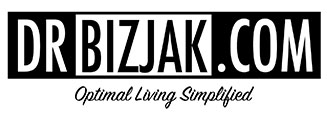As we ate dinner outside one evening last week, the television was still on after the U.S. Open ended. We half-interestedly were watching some game show as we ate. After several rounds of commercials, my wife, Lana, noted not just how many drug ads had played, but how ridiculous they were. She said it felt almost like these ads were spoofs of real ads because of how animated and orchestrated they were, as well as the possible side effects that they announced at the end of each one.
A patient recently told me that when her mother first moved here from another country, she was amazed to see that pharmaceutical companies were allowed to advertise their drugs on television. Why would they be allowed, or even want to, advertise a product that the general public is unable to go and freely buy? That’s a great question. It is also worth noting that in only two countries is it legal for drug companies to advertise their drugs–the U.S. being one, and New Zealand being the other.
I am not surprised that the U.S. allows this advertising, as Big Pharma has very strong influence and control over just about every aspect of policy-making in this country. Money talks! And they have LOTS of money to spend. The heavy advertising works in multiple ways to help drug companies push their dangerous, often only mildly successful (in terms of influencing the condition they are designed to treat) products.
With $8.1 billion spent on direct-to-consumer marketing in 2022, a number that has increased dramatically over the past decade, the drug companies must be getting a good return on their investment, or we wouldn’t see so many ads. Good doctors, and the American Medical Association as a whole, are opposed to the practice, but it continues. The ads often over-hype the benefits, downplay the risks, and are designed very strategically by high-level marketing companies.
It’s hard not to be drawn in by the animated content, the vivid colors, professional actors, and even the crazy names of these drugs. In case you hadn’t noticed, many drugs contain the letters X, Y, and Z. Why? Because these letters tend to carry more scientific weight. In a New York Times article from back in 2003, James L. Dettore, the then president of the Brand Institute, said these letters (along with C and D) subliminally indicate that a drug is powerful. According to him, “The harder the tonality of a name, the more efficacious the product in the mind of the physician and the end user.” Think of Vioxx, Celebrex, Zoloft, Xarelto, over-the counter drugs, like Nexium and Clarinex, the almost unpronounceable drug names like Xtandi, Xalkori, or Xgeva, and even Xyzal, which manages to use all three of the powerful letters. Drug companies have spent as much as a half a million dollars on developing catchy and influential drug names alone.
Advertising to consumers helps to get doctors to prescribe drugs that they might not otherwise prescribe. The ads tell you to “ask your doctor about…,” so people do. This puts doctors in a position to feel compelled to please the patient. And more and more money is being spent pushing drugs that have lower health benefit. One reason is that the drug companies know that with lower health benefits, the doctors are less likely to prescribe that drug (duh!). So, enticing consumers to ask the doctor for that drug drives prescriptions, thus boosting profits.
With such a huge amount of money being spent on television advertising by the pharmaceutical industry, that also protects the drug companies from negative news stories being aired. When a drug company gets fined billions for dollars for bribing doctors, pushing drugs for conditions they were not studied or approved for, and/or Medicare fraud, you would think it would be the top news story. But how can a news show that is heavily funded by or even sponsored by that drug company air negative press about them and expect that drug company to continue spending all that money? It ends up as legal bribery.
Listen to the end of these ads, when the narrator’s voice speeds up and lowers, as they list off the potential side effects. I often think living with the condition itself may be safer than taking the risk with the drug. And remember that the claims made by these ads are often inflated. They use data that is manipulated to make the numbers sound more impressive, and their primary goal is to sell more drugs and make more money… not to save lives and improve the well-being of the planet.
Remember… the U.S. is only one of two countries that allows direct-to-consumer drug advertising. All other countries banned it. Also remember that over 100,000 people die each year from properly prescribed medication. If more medication was the answer to our health problems, the U.S. would be the healthiest country on the planet. But instead, we are among the unhealthiest nations in the world.







